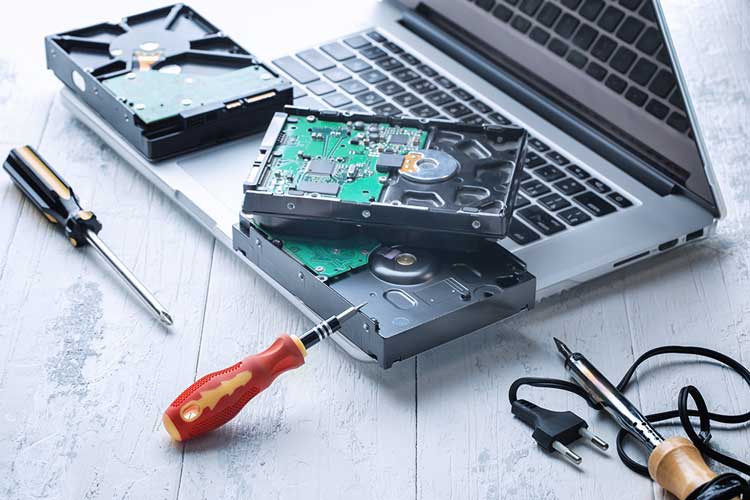How to Find the Best Computer Repair Shops
Last updated May 2025

In the end, you may need a pro to straighten things out. Our Ratings Tables will help you find one.
We asked area consumers to rate shops they had used as “inferior,” “adequate,” or “superior” on several different aspects of service: “doing work properly on the first try,” “starting and completing work promptly,” “letting you know cost early,” “advice on service options and costs,” and “overall quality.” For companies that received at least 10 ratings, our Ratings Tables show the percent of each company’s surveyed customers who rated it “superior” (as opposed to “inferior” or “adequate”) on each survey question. Our Ratings Tables also report the percent of surveyed customers who rated each company “adequate” or “superior” (as opposed to “inferior”) for “overall quality.” Click here for further discussion of our customer survey and other research methods.
Some of the shops listed on our Ratings Tables received very high ratings, but there are others to avoid.
Some tips for dealing with the shop:
Put the problem in writing.
Give the shop a written description of your computer issues, describing the occasions when problems occur, exactly what happens, etc.
If possible, talk to the technician.
A face-to-face exchange with your computer tech ensures you adequately communicate the symptoms and may make the technician care more about doing the job right. You also might better understand why a technician can’t solve a problem if you discuss the obstacles.
Get a few written estimates.
Know the exact work you need? Call or email several shops for price quotes, pushing for firm prices. Some repair pros won’t give you quotes without seeing the device; others will, with the understanding that the price might rise if the work that needs to be done is more extensive.
Don’t know what’s wrong? Take in your equipment for diagnosis; most shops charge $50 to $150 to look at it and provide a price to fix it. (Almost all of them apply the estimate fee to the cost of the repair if they do the work.) Avoid high estimate fees, which make it costly to take your computer elsewhere.
To protect yourself from a big price surprise, tell the shop that no repairs are to be made without a written estimate and your approval. If you accept an estimate, state in writing that you will not pay for charges that exceed the estimate by more than 20 percent.
Consider whether the repair is worth it.
Repairing a computer often costs hundreds of dollars. If you have a newer device and still like it, spending that much makes sense. But if you have an old computer that will soon become obsolete, think about whether you might be better off buying a new model.

If you are quoted a high price, get more estimates.
Although it can be difficult to get repair estimates, most shops will provide them for upgrade services. Contact a few shops and describe the upgrade or repairs another pro has recommended. If you are shopping for repairs, of course, this process doesn’t tell you whether the first shop’s diagnosis or recommendations are correct. If you suspect that they are incorrect, consider taking your device to a second shop for an estimate—even if it costs you a fee.
Nail down the time.
Although unforeseen problems can arise, you’ll be in a better position to argue for priority service if you’ve received an advance commitment for when the work will be completed.
Ask for replaced parts.
Even if you’ve never seen a motherboard or hard drive, shops don’t know how much you—or your nerd brother-in-law—knows. The shop will be reluctant to replace good parts or claim falsely to have replaced parts if it knows it has to return replaced parts to you.
If you leave a device with a repair company, get a receipt.
Get a detailed invoice.
The invoice should state: name and address of repair shop; your name and address; description of repair; itemized charges; date repair was completed; and statement of any warranty. An invoice will be essential if you need to take advantage of the shop’s repair warranty.
Pay by credit card.
If you are dissatisfied with a company’s work, and it won’t make things right, you’ll have the option to contest the charge with your credit card company and get your money back.
Ask whether there’s something you can do (or stop doing) to prevent future problems.
Test the device as soon as you get it home.
If problems persist, either take the device back to the shop immediately or email the shop to document that the problems were never solved.


